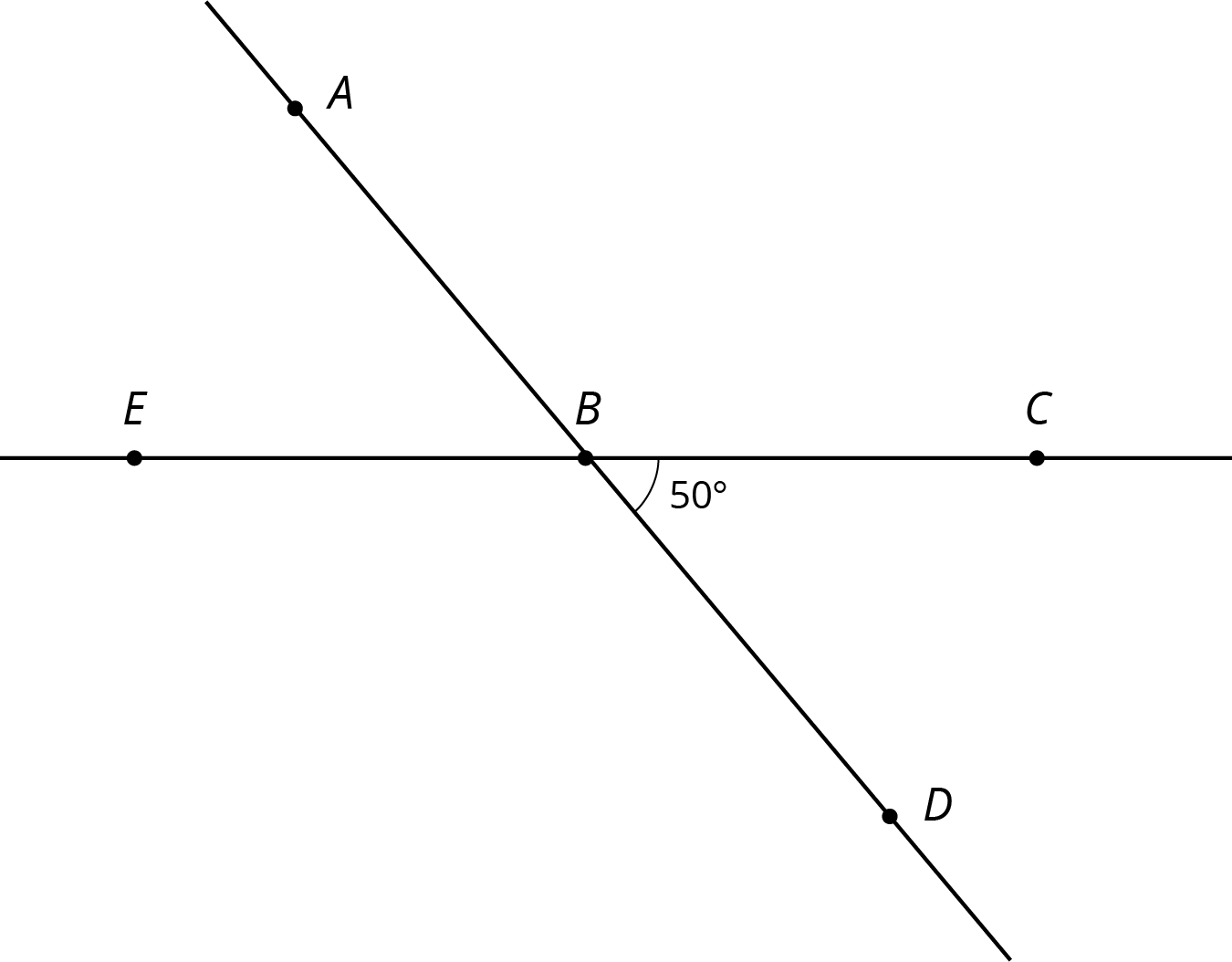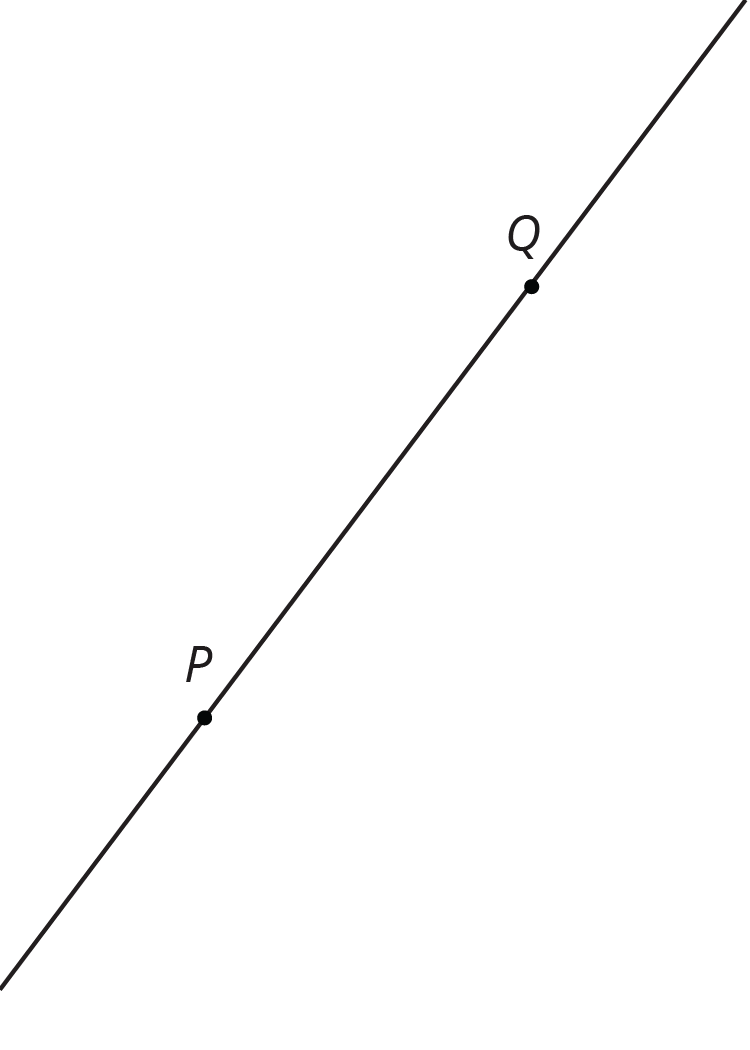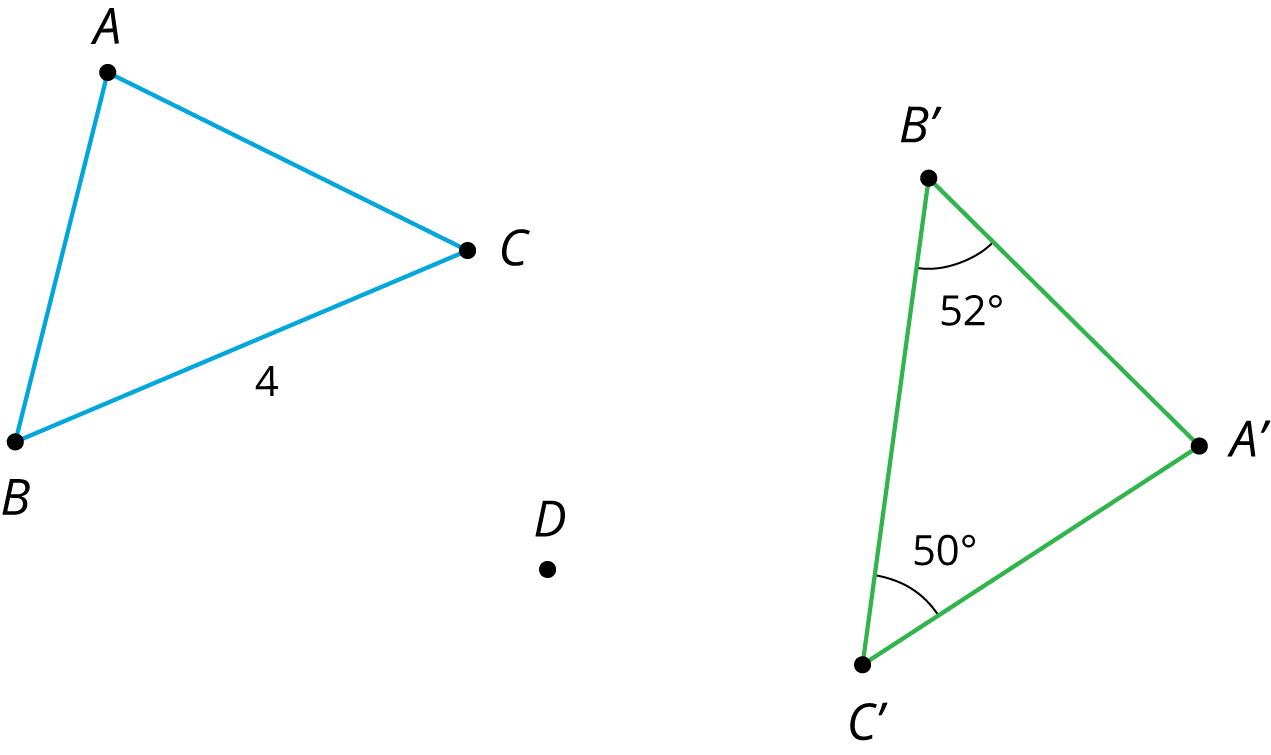Lesson 9
Moves in Parallel
Problem 1
- Draw parallel lines \(AB\) and \(CD\).
- Pick any point \(E\). Rotate \(AB\) 90 degrees clockwise around \(E\).
- Rotate line \(CD\) 90 degrees clockwise around \(E\).
- What do you notice?
Solution
For access, consult one of our IM Certified Partners.
Problem 2
Use the diagram to find the measures of each angle. Explain your reasoning.
- \(m{\angle ABC}\)
- \(m{\angle EBD}\)
- \(m{\angle ABE}\)

Solution
For access, consult one of our IM Certified Partners.
Problem 3
Points \(P\) and \(Q\) are plotted on a line.

- Find a point \(R\) so that a 180-degree rotation with center \(R\) sends \(P\) to \(Q\) and \(Q\) to \(P\).
- Is there more than one point \(R\) that works for part a?
Solution
For access, consult one of our IM Certified Partners.
Problem 4
In the picture triangle \(A’B’C’\) is an image of triangle \(ABC\) after a rotation. The center of rotation is \(D\).

- What is the length of side \(B’C’\)? Explain how you know.
- What is the measure of angle \(B\)? Explain how you know.
- What is the measure of angle \(C\)? Explain how you know.
Solution
For access, consult one of our IM Certified Partners.
(From Unit 1, Lesson 7.)Problem 5
The point \((\text-4,1)\) is rotated 180 degrees counterclockwise using center \((0,0)\). What are the coordinates of the image?
A:
\((\text-1,\text-4)\)
B:
\((\text-1,4)\)
C:
\((4,1)\)
D:
\((4,\text-1)\)
Solution
For access, consult one of our IM Certified Partners.
(From Unit 1, Lesson 6.)